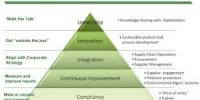Introduction
Personal selling involves person-to-person communication makes it a natural method for getting customers to experience a product for the first time. In fact, creating interest goes hand-in-hand with building product awareness as sales professionals can often accomplish both objectives during the first encounter with a potential customer.
Stage One – Prospecting
Prospecting is all about finding prospects, or potential new customers. Prospects should be ‘qualified,’ which means that they need to be assessed to see if there is business potential, otherwise you could be wasting your time. In order to qualify your prospects, one needs to:
- Plan a sales approach focused upon the needs of the customer.
- Determine which products or services best meet their needs.
- In order to save time, rank the prospects and leave out those that are least likely to buy.
Stage Two – Making First Contact
This is the preparation that a salesperson goes through before they meet with the client, for example via e-mail, telephone or letter. Preparation will make a call more focused.
- Make sure that you are on time.
- Before meeting with the client, set some objectives for the sales call. What is the purpose of the call? What outcome is desirable before you leave?
- Make sure that you’ve done some homework before meeting your prospect. This will show that you are committed in the eyes of your customer.
- To save time, send some information before you visit. This will wet the prospect’s appetite.
- Keep a set of samples at hand, and make sure that they are in very good condition.
- Within the first minute or two, state the purpose of your call so that time with the client is maximised, and also to demonstrate to the client that your are not wasting his or her time.
- Humour is fine, but try to be sincere and friendly.
Stage Three – The Sales Call (or Sales Presentation)
It is best to be enthusiastic about your product or service. If you are not excited about it, don’t expect your prospect to be excited.
Focus on the real benefits of the product or service to the specific needs of your client, rather than listing endless lists of features.
Try to be relaxed during the call, and put your client at ease.
Let the client do at least 80% of the talking. This will give you invaluable information on your client’s needs.
Remember to ask plenty of questions. Use open questions, e.g. TED’s, and closed questions i.e. questions that will only give the answer ‘yes’ or the answer ‘no.’ This way you can dictate the direction of the conversation.
Never be too afraid to ask for the business straight off.
Stage Four – Objection Handling
Objection handling is the way in which salespeople tackle obstacles put in their way by clients. Some objections may prove too difficult to handle, and sometimes the client may just take a dislike to you (aka the hidden objection). Here are some approaches for overcoming objections:
- Firstly, try to anticipate them before they arise.
- ‘Yes but’ technique allows you to accept the objection and then to divert it. For example, a client may say that they do not like a particular colour, to which the salesperson counters ‘Yes but X is also available in many other colours.’
- Ask ‘why’ the client feels the way that they do.
- ‘Restate’ the objection, and put it back into the client’s lap. For example, the client may say, ‘I don’t like the taste of X,’ to which the salesperson responds, ‘You don’t like the taste of X,’ generating the response ‘since I do not like garlic’ from the client. The salesperson could suggest that X is no longer made with garlic to meet the client’s needs.
- The sales person could also tactfully and respectfully contradict the client.
Stage Five – Closing the Sale
This is a very important stage. Often salespeople will leave without ever successfully closing a deal. Therefore it is vital to learn the skills of closing.
- Just ask for the business! – ‘Please may I take an order?’ This really works well.
- Look for buying signals (i.e. body language or comments made by the client that they want to place an order). For example, asking about availability, asking for details such as discounts, or asking for you to go over something again to clarify.
- Just stop talking, and let the client say ‘yes.’ Again, this really works.
- The ‘summary close’ allows the salesperson to summaries everything that the client needs, based upon the discussions during the call. For example, ‘You need product X in blue, by Friday, packaged accordingly, and delivered to your wife’s office.’ Then ask for the order.
The ‘alternative close’ does not give the client the opportunity to say no, but forces them towards a yes.
















